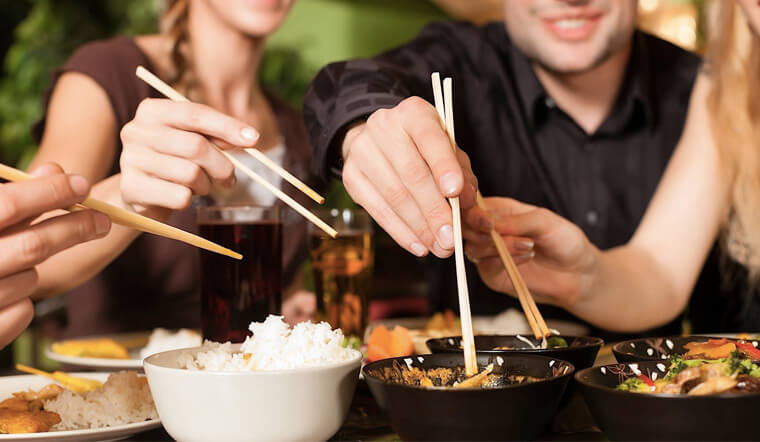There are several countries around the world where chopsticks are commonly used as utensils for eating. Here are some of the prominent chopstick-eating countries, along with their cultural characteristics and brief descriptions:
- China:
- Cultural Characteristics: China has a rich culinary tradition and diverse regional cuisines. Chinese cuisine is known for its emphasis on fresh ingredients, delicate flavors, and a balance of textures. The use of chopsticks is deeply ingrained in Chinese culture and is considered a symbol of Chinese identity. Chinese dining etiquette emphasizes communal eating and sharing dishes.
- Japan:
- Cultural Characteristics: Japanese cuisine is renowned for its artistry, precision, and focus on fresh ingredients. Traditional Japanese meals often consist of rice, fish, pickled vegetables, and miso soup. Chopsticks, known as “hashi” in Japanese, are an essential part of Japanese dining culture. Japanese chopsticks are typically shorter and taper towards the end. Japanese dining etiquette places importance on respect, modesty, and proper use of chopsticks.
- South Korea:
- Cultural Characteristics: Korean cuisine is characterized by bold flavors, extensive use of vegetables, fermented foods, and grilled meats. Korean chopsticks, called “jeotgarak,” are typically made of metal and have a flat, rectangular shape. Korean dining culture often involves communal eating, with shared side dishes and the use of chopsticks for picking up food.
- Vietnam:
- Cultural Characteristics: Vietnamese cuisine is known for its fresh herbs, vibrant flavors, and a balance of textures. Traditional Vietnamese meals often include rice, noodles, vegetables, and various meats or seafood. Chopsticks, called “đũa” in Vietnamese, are commonly used for eating. Vietnamese dining culture emphasizes the importance of balance, harmony, and shared meals.
- Thailand:
- Cultural Characteristics: Thai cuisine is renowned for its bold and complex flavors, combining elements of sweet, sour, spicy, and salty. Thai meals frequently feature rice or noodles, along with a variety of herbs, spices, and fresh ingredients. Chopsticks are not the primary utensil in Thai cuisine, but they are sometimes used for specific dishes or in Chinese-influenced Thai cuisine.
- Taiwan:
- Cultural Characteristics: Taiwanese cuisine showcases a fusion of Chinese, Japanese, and Southeast Asian influences. It offers a wide range of dishes, including street food favorites, seafood, and regional specialties. Chopsticks are commonly used in Taiwan, and dining etiquette emphasizes respect, modesty, and communal eating.
- Laos:
- Cultural Characteristics: Laotian cuisine is influenced by neighboring countries, such as Thailand and Vietnam. It features aromatic herbs, sticky rice, grilled meats, and spicy flavors. Chopsticks are used in Laos, particularly for noodle dishes and certain shared meals.
It’s important to note that while chopsticks are used in these countries, cultural characteristics extend far beyond utensil use. Each country has its own unique customs, traditions, and cultural practices that go beyond dining etiquette. These characteristics encompass language, religious beliefs, art, music, history, and more, contributing to the rich tapestry of global cultures
SHARE
